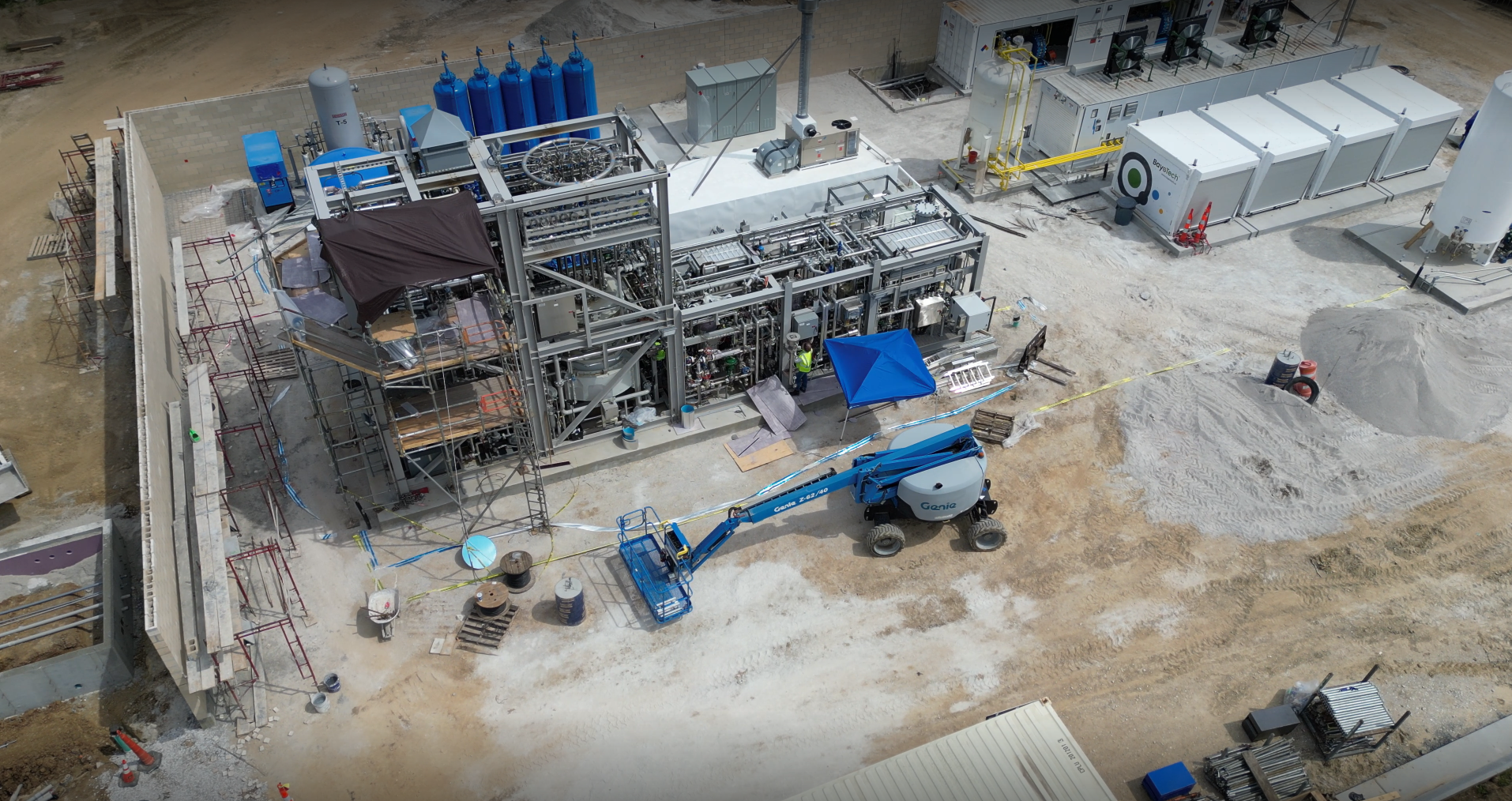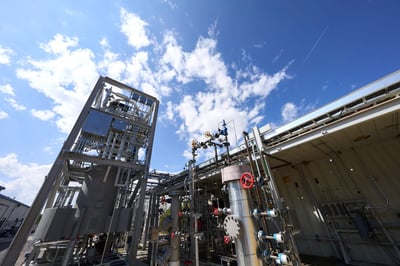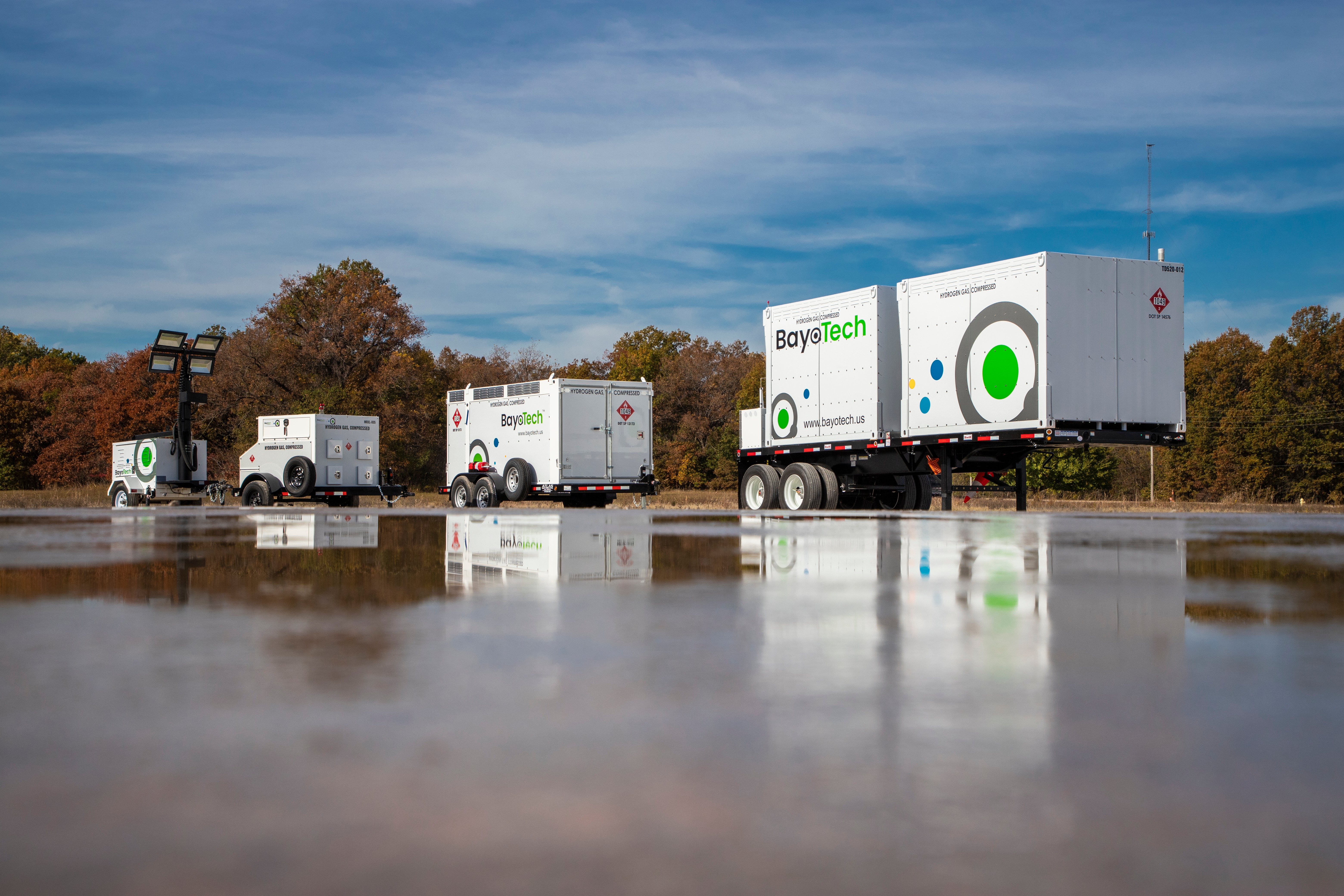We are delighted to share an insightful conversation with Raj Melkote, the Senior Vice President of Technology at BayoTech. As an expert in the field of hydrogen production and innovation, Raj brings a wealth of knowledge and experience to his role at BayoTech. In this interview, we delve into the world of SMR (Steam Methane Reforming) technology, explore BayoTech's differentiated approach, and uncover the key factors that contribute to the creation of low-carbon hydrogen.

Raj directly oversees innovation, testing, design, and continuous improvement of BayoTech's products. His focus is the hydrogen generation side of the technology, including the hubs, while also maintaining a matrix responsibility for the technology related to hydrogen storage and transport. His leadership and expertise are instrumental in driving BayoTech's commitment to advancing hydrogen solutions and contributing to a sustainable future.
Can you give us an overview of SMR technology and how it works?
SMR, which stands for Steam Methane Reforming, involves cleaning up municipal water, converting it into steam, and combining it with purified municipal natural gas to produce hydrogen. This process has been known for a long time and relies on a catalyst, operating at high temperatures above 900 degrees Celsius. However, the main challenge of SMR lies in its technical aspects, as it results in byproducts such as carbon monoxide (CO) and carbon dioxide (CO2), alongside hydrogen. Therefore, we need to purify the output from SMR to get saleable hydrogen for our customers.
What about producing hydrogen through electrolysis?
Sure! When it comes to hydrogen production, electrolysis is often considered an exciting method. However, it's important to note that currently, 95% of the hydrogen available on the market is still produced through SMR. While electrolysis is an emerging technology, it is slightly behind in terms of development.
Electrolysis involves using electricity to split water into hydrogen and oxygen, and on the surface, it seems like a carbon-neutral process since there are no carbon emissions from the feedstock or the product. However, the electricity consumption per kilogram of hydrogen produced through electrolysis is quite high. Therefore, the overall carbon impact needs to be considered, including the source of the electricity used. If electrolysis is performed using truly renewable sources of electricity and in regions with low-cost kilowatt-hour rates, it can be environmentally favorable. This is where innovation and advancements are focused. However, it will take time for electrolysis to reach a level of maturity and competitiveness compared to SMR.
It's important to maintain perspective and recognize that SMR is currently widespread and can be made attractive in terms of carbon intensity even before electrolysis becomes more mature. As electrolysis scales up, there may be additional challenges that need to be addressed.
What’s BayoTech’s approach to SMR?
At BayoTech, we have a slightly differentiated approach to SMR compared to the traditional method. Three key aspects set us apart.
- We utilize a proprietary catalyst that efficiently transfers heat to the reactants without causing hydraulic or pressure drop limitations.
- Our patented Bayonet reactor design enables effective heat transfer from the SMR product to the SMR reactants.
- There are only a limited number of companies producing hydrogen at the small scale we aim for. Most traditional SMR manufacturers operate at a larger scale, producing hundreds or thousands of tons. Our target is to use the SMR process on a small scale and make it economically viable.
To achieve this, we optimize heat utilization within the system. We generate only the necessary amount of steam for the SMR reaction and employ a network of heat exchangers to recover most of the generated heat. Remarkably, we accomplish all of this within a small footprint, as evidenced by our compact hubs. While the core process remains similar to traditional SMR, these additional elements differentiate and enhance our approach.
Can you explain in detail how the system creates low-carbon hydrogen?
As mentioned before, BayoTech’s model offers a hidden advantage of producing hydrogen in close proximity to users, resulting in a smaller carbon footprint. This approach minimizes the carbon impact by avoiding long-distance transportation from central facilities.
We consider the entire process from sourcing natural gas to end use. This includes the SMR process itself, sourcing and cleaning the natural gas, and converting it into hydrogen through SMR. Additionally, there is the energy consumption associated with compressing, liquefying, and transporting hydrogen, which centralized facilities commonly undertake. However, in our decentralized model, we reduce energy consumption by avoiding liquefaction and minimizing compression. Furthermore, the transportation of liquid hydrogen to end users adds to the overall carbon impact. At the user's end, the liquid hydrogen must be converted back into its gaseous form for use.
When comparing these factors to centralized SMR manufacturers, BayoTech's carbon intensity index is significantly lower, measuring at 110 compared to the typical range of 120 to 150. However, we can further improve this carbon intensity by incorporating renewable natural gas (RNG) derived from bio sources. We can directly use RNG or trade credits for it if available. By blending 30% of our natural gas with RNG, we can achieve a carbon intensity of zero. And if we transition to using 100% RNG, our carbon intensity would become negative.
I would say the BayoTech’s model is very effective, but it has the potential to become even stronger in terms of low carbon intensity. As we continue to develop our technology and utilize renewable natural gas (RNG) or RNG credits, we can further improve our carbon footprint.

How does this whole process ensure safety?
Ensuring safety is a crucial aspect of the SMR process. When dealing with hydrogen and natural gas, which are both flammable fuels, it becomes even more critical. To address this, we focus on controlling the elements necessary for a fire, namely fuel, oxygen, and an ignition source.
In the case of SMR and our hubs, fuel usage is unavoidable since we are producing fuel. However, we prioritize eliminating and controlling the presence of oxygen and ignition sources. To prevent oxygen from entering the process, both hydrogen and natural gas are kept under pressure within an oxygen-free environment. This means that air leakage is effectively prevented.
To mitigate the risk of ignition sources, we ensure that all electrical devices, including motors, gear cabling, etc., comply with hazardous area classification. Our facility follows Class 1, Div 1/Div 2 classification, specifically designed for handling combustible or flammable gases. By adhering to these standards, we minimize or eliminate the possibility of an ignition source, even in unlikely events such as a leak.
Overall, safety measures in the SMR process and our operations prioritize controlling oxygen levels, minimizing ignition sources, and complying with rigorous standards to ensure a safe environment.
What does BayoTech’s future technology look like and are there any new developments on the horizon?
Absolutely! As the SVP of Technology, it's my responsibility to explore future technologies and make BayoTech's decentralized production model even more compelling. There are several exciting developments on the horizon that we're working on. We are constantly looking to innovate areas where we can increase capacity and decrease energy requirements of the system.
Additionally, we are focused on the non-SMR side of the process, including equipment enhancements for our transport equipment, and some new products that will fit within the ecosystem that we already provide for our customers. These are just a few areas where my team is actively working to prepare us for the future. By continuously innovating and addressing challenges, we aim to stay at the forefront of the evolving hydrogen industry.




